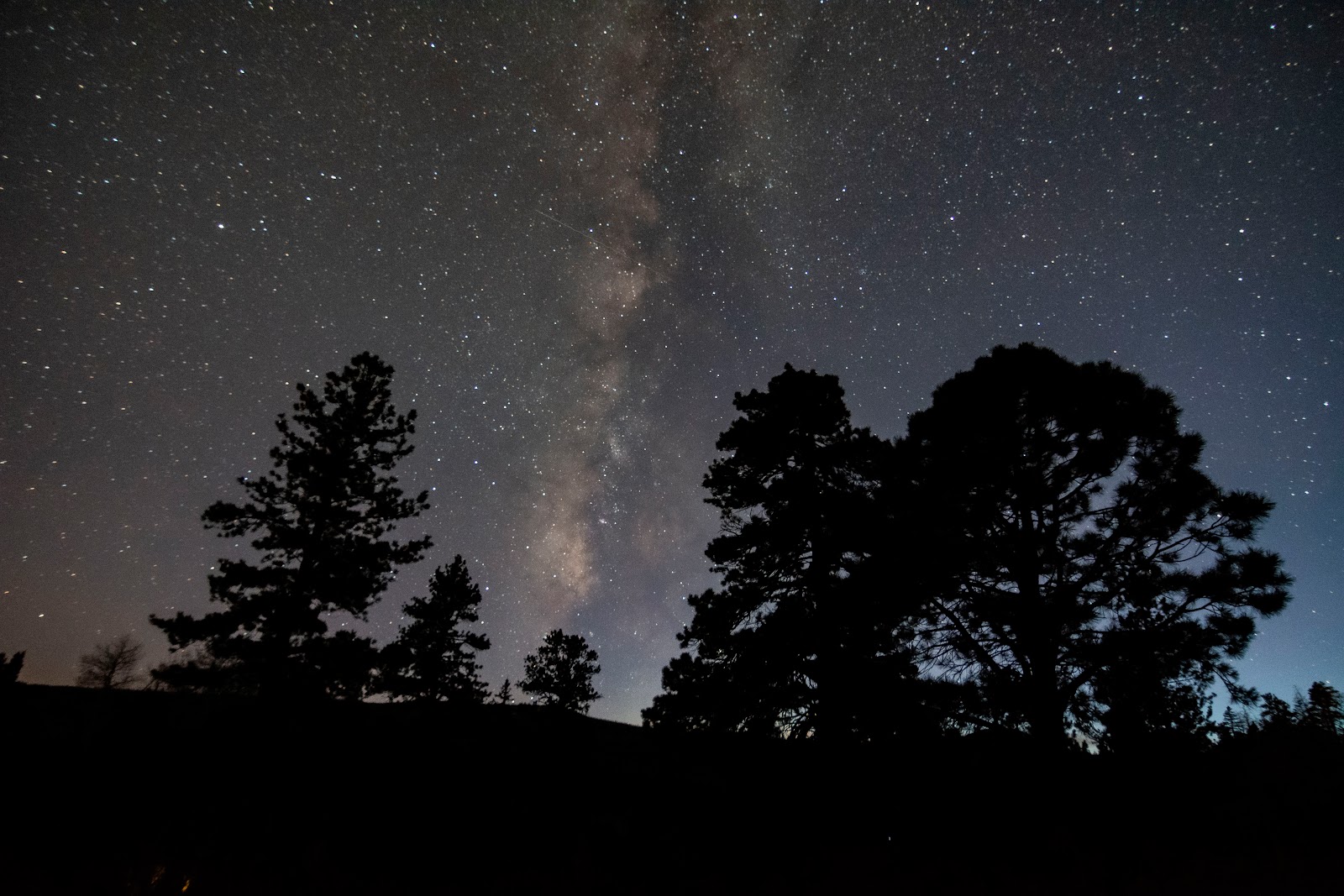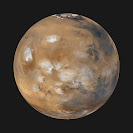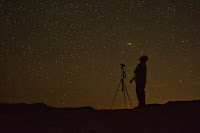Introduction
Overall, August was hot but did present quite a few cloud-free nights for stargazing. I was able to host a small star party and view many of my favorite night sky objects, as well as a few new targets. I traveled to Fish Lake, Utah, during the New Moon phase in August and brought along my camera gear and smart telescope. Fish Lake has a Bortle Class 2 rating, indicating minimal light pollution. I visited Fish Lake in 2024 and was able to capture some great night sky images, so I planned to repeat the experience this year. Unfortunately, the weather had other plans. It rained every day, and there was 90% cloud cover at night. I was disappointed, but the cooler weather and rain (which I enjoy, just not for astronomy reasons!) were a lovely change from the heat.
September should bring cooler temperatures for Utah, but also an increase in cloud cover and storms. As mentioned above, I do enjoy the stormy weather, but for stargazing, it can be frustrating. This year in September, Saturn and Neptune will reach opposition, making it the best time of year to view these planets. A Total Lunar Eclipse will occur for millions of people around the world, just not for those in the continental United States. There will not be a major meteor shower this month, but the Zodiacal Light will be visible before sunrise. I have another trip planned for the end of the month to visit a Bortle Class 1 region, which is virtually devoid of light pollution. I plan to take my camera gear and smart telescope again. Hopefully the weather cooperates!
Since Mercury lies close to the Sun, it is usually a challenge to spot in the early morning or early evening sky. September will not be an exception. The best chance will come during the first days of the month when Mercury can be found close to Regulus in the morning sky. This tiny world will shine brightly at magnitude -1.2 on the 1st, but will be low on the eastern horizon. Mercury will move closer to the Sun until it reaches superior conjunction with our star on the 13th. Mercury will be lost from view for the remainder of September.
Venus will remain an easy object to spot in the morning sky throughout September. During the first few days of the month, while Mercury is close to Regulus, Venus can be found close to the Beehive Cluster. A pair of binoculars or a low-power eyepiece in a telescope will be needed to view the Beehive Cluster. Perhaps Venus feels jealous and approaches Regulus until the 19th, when the pair can be found close together. A thin Crescent Moon can be found less than a degree away from this pair on the 19th. Venus will quickly move away from Regulus as it continues its eastward trek across the sky.
Mars is still hanging around in the western sky after sunset. The Red Planet sinks quickly with the constellation of Virgo after sunset. Spica, the brightest object in Virgo, can be found close to Mars on the 11th.
Jupiter rises with Orion and the northern, much fainter, Milky Way Band. Betelgeuse and Jupiter will frame this region of the Milky Way, making it easier for those trying to spot it. Jupiter doesn't rise until around 4:00 a.m. for Utahns as the month begins. However, by the end of the month, Jupiter will rise about two hours earlier. Several Galilean moon transits will be visible during September. I encourage interested observers to use the Moons of Jupiter and Saturn app for Android or Gas Giants for iOS devices to determine when these transits occur at their location. Both of these apps are free. If an observer is interested in a paid and more comprehensive app, I highly recommend Stellarium Plus for both Android and iOS, as well as Sky Safari Pro for iOS. The Earth's own Moon will pass close by Jupiter on the 16th this month.
While all of the planets are favorite views of most astronomers, observers should pay particular attention to Saturn during September. The Ringed Planet will be at its best in 2025 this month as it reaches opposition on the 21st. This means Saturn will rise in the east as the Sun sinks below the horizon. The reflected sunlight from Saturn will help observers view more detailed planetary features, such as the various shades of the cloud bands and the numerous rings of Saturn. Unfortunately, the tilt of the rings isn't at its best this year, but it will improve in the coming months. Several Saturnian moon transits are visible this month. The apps mentioned above will also give observers additional resources for Saturn. The Earth's Full Moon will pass close by on the 8th.
Uranus will continue riding on the back of Taurus during September. This planet will be harder to find in the night sky due to its dimness and the absence of easy guideposts to locate it. Uranus can be found between the Pleiades and the Hyades. The Hyades contains Aldebaran, the bright red star that represents the angry eye of Taurus. The Moon passes close by on the 12th.
Neptune will remain close to Saturn during September and will reach opposition on the 23rd, just two days after the Ringed Planet. A pair of binoculars or a telescope will be needed to see this dim world. The Full Moon will pass close to Neptune on the 8th.

Return of the Zodiacal Light
The Autumnal Equinox occurs on the 22nd of September this year. With no major meteor showers during the month, observers should turn their attention to the morning sky for the chance to view the Zodiacal Light. The best time to view this light is during the evening hours of March and the early morning hours in September. During this time of the year, an observer should find a sky free of all forms of light pollution, including the Moon, and a clear, unobstructed view of the eastern horizon. The Zodiacal Light will appear as a cone, think of a traffic cone, extending upwards from Leo the Lion through Cancer and terminating in Gemini, where Jupiter can be found. The second half of September will be the best time to view the Zodiacal Light this month because of the Moon's phase. During this time of the month, Leo will begin to climb above the eastern horizon at 4:30 in the morning with brilliant Venus. I will attempt to capture the Zodiacal Light during my camping trip at the end of the month.
 |
Monthly Breakdown
September 07: Full Moon 🌕September 08: Moon passes within 3° of NeptuneSeptember 08: Moon passes within 4° of SaturnSeptember 12: Moon passes within 5° of UranusSeptember 13: Mercury reaches Superior ConjunctionSeptember 14: Last Quarter Moon🌗September 16: Moon passes within 5° of JupiterSeptember 19: Moon passes within 1° of VenusSeptember 19: Moon, Venus, and Regulus within 2°September 21: New Moon 🌑September 21: Saturn reaches oppositionSeptember 22: Autumnal EquinoxSeptember 23: Neptune reaches oppositionSeptember 24: Moon passes within 4° of MarsSeptember 29: First Quarter Moon 🌓









